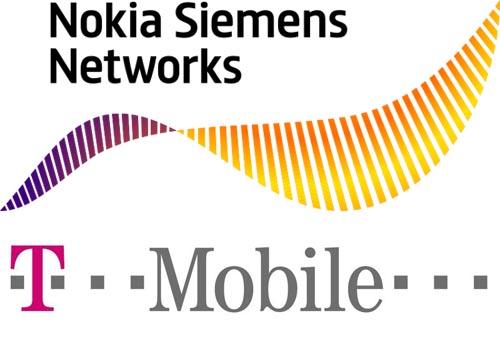
Everyone knows by now that T-Mobile, rather than make the move to LTE or WiMAX, has opted to brand their growing HSPA+ network as "4G," leaving many to wonder what Magenta would move to after upgrading to HSPA+. Now it appears that we have the answer to that question: Long Term HSPA Evolution. Today Nokia Siemens announced that the specs for Long Term HSPA Evolution have been submitted to the 3GPP, and T-Mobile is described as "driving the technology's standardization." LTHE promises peak speeds of 650Mbps, shy of LTE-Advanced's 1Gbps speeds, and is expected to be commercially available in 2013. Check out the press release below.
We may still be a couple of years away from seeing Long Term HSPA Evolution actually hit the market, but it's good to see T-Mobile planning ahead, especially since the tech is backward compatible with the current HSPA networks. With this news, Magenta can continue to build out their current HSPA+ network, confident that they'll be able to continue to milk it for years to come. So much for the possibility of T-Mo moving to WiMAX or LTE any time soon, huh?
T-Mobile USA, Nokia Siemens Networks drive evolution of HSPA
Espoo, Finland – 15 December 2010
Mobile leaders promote standardization of Long Term HSPA Evolution to unleash speeds of more than 650 Mbps
Operators would be able to achieve peak data rates of more than 650 megabits per second (Mbps), thanks to an HSPA standard being driven by T-Mobile USA and Nokia Siemens Networks. Long Term HSPA Evolution would improve mobile broadband with speeds matching those promised by LTE Advanced. T-Mobile USA and Nokia Siemens Networks are driving the technology's standardization aiming to make it available for commercial deployment by 2013.
The proposed key features of Long Term HSPA Evolution were accepted during the plenary meeting of 3GPP RAN held on 7-10 December, 2010*.
"We strongly believe in continued HSPA evolution in parallel to the further development of LTE and LTE Advanced," said Neville Ray, chief technology officer, T-Mobile USA. ''Long Term HSPA Evolution will allow us to enhance our 4G mobile broadband network beyond its current and planned near term capabilities, and provide room for considerable growth and speed enhancements. As customer demand for wireless data increases, we are well positioned to compete based on the speed, breadth and evolution path of our mobile broadband service."
"The demand for higher data rates and mobile broadband growth continues to push the need for advances in both HSPA and LTE technologies," added Keith Sutton, head of the WCDMA business line for Nokia Siemens Networks. "We are thus equally committed to both technologies. As a leader in HSPA evolution, we have already demonstrated data rates exceeding 100 Mbps at the Mobile World Congress earlier this year. Today, we also have the largest number of HSPA customers with nearly 200 operators worldwide. Driving the standardization of the new technology is a natural extension of our efforts to realize the full potential of HSPA."
Nokia Siemens Networks' Single Radio Access Network (RAN) platform is already prepared for Long Term HSPA Evolution. Operators would have a smooth evolution path to handle increased network traffic along with controlling costs with the introduction of the new technology.
In addition, all Long Term HSPA Evolution features are backwards compatible and can be used together with existing WCDMA and HSPA mobiles on the same carriers.
Via Engadget